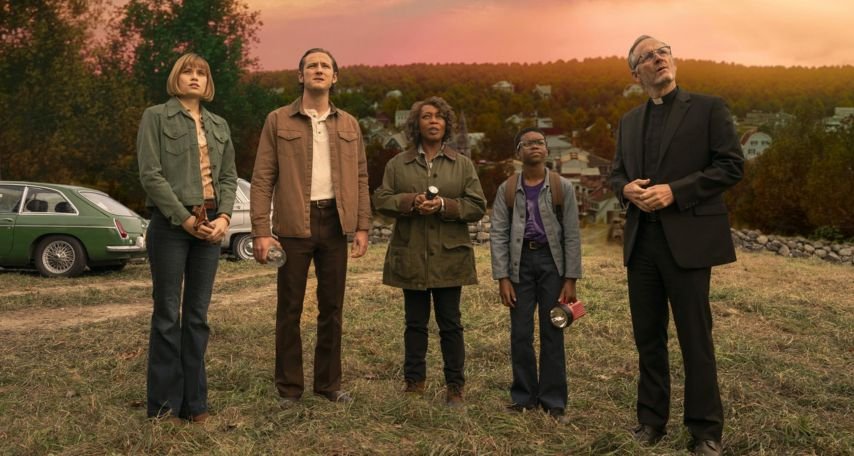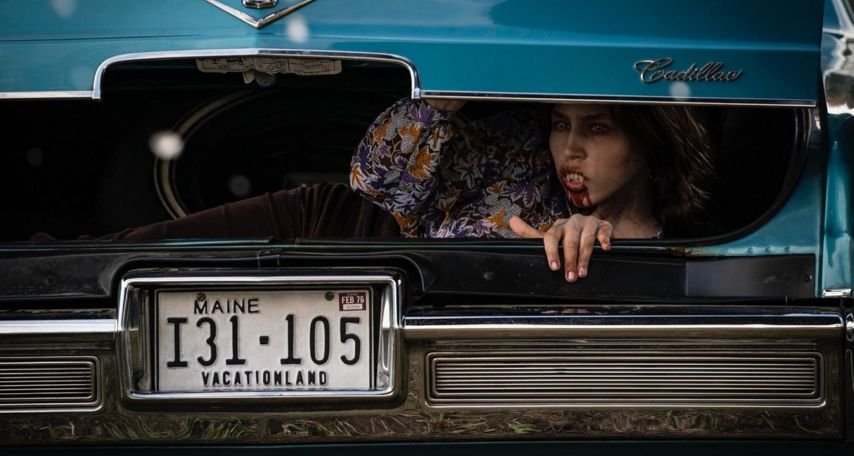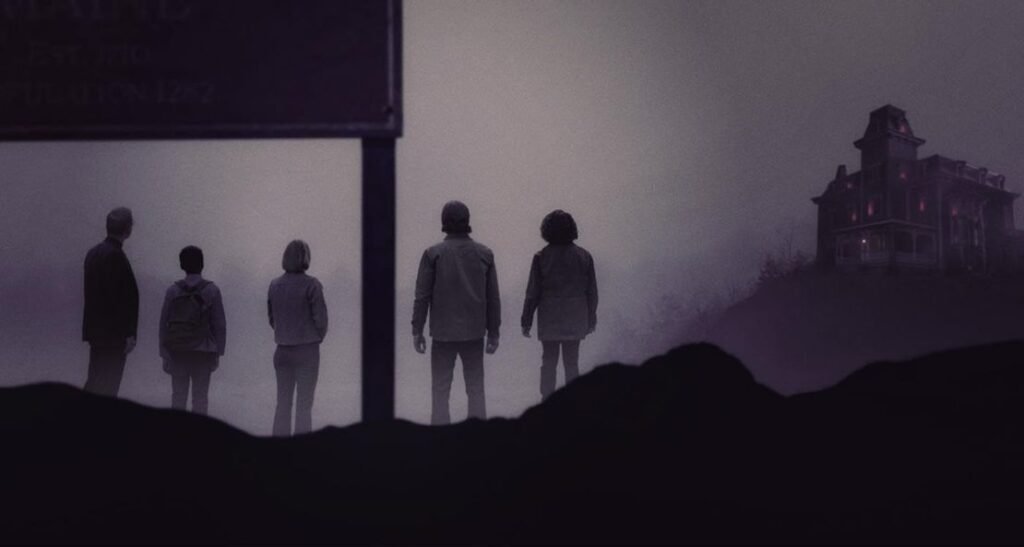Stephen King’s Salem’s Lot is a touchstone in the vampire genre. With its fusion of small-town Americana and creeping horror, it has haunted readers since 1975.
In 2024, director Gary Dauberman revived this tale in a feature-length adaptation.
But does it manage to capture the magic of King’s vision or fall victim to its own ambitions?
Let’s explore its strengths, missed opportunities, and impact.

The Challenge of Condensing King: Where It Stumbles
Adapting Salem’s Lot into a single film is akin to trying to condense an epic novel into a short story.
The plot, rich in subtext and character arcs, demands breathing room.
Previous adaptations (the 1979 and 2004 miniseries) succeeded because they allowed the story to unfold at a measured pace.
The 2024 version, however, runs at a breakneck speed, sacrificing atmosphere and emotional depth for efficiency.
Take the transformation of Danny Glick, for example. In the book and earlier adaptations, this moment is haunting and lingers in the viewer’s mind.
In Dauberman’s version, it’s reduced to a quick plot point, robbing it of its emotional and thematic weight.
Similarly, the ominous presence of the Marsten House—a character in its own right in the novel—is underutilised, with its prologue cut during post-production.
While the film attempts to maintain key plot points—Ben Mears’ return to Jerusalem’s Lot, Straker and Barlow’s sinister plans, and the town’s descent into vampirism—these moments lack connective tissue.
Scenes feel disjointed, as though they’ve been trimmed to fit a runtime rather than to serve the story.
Casting: Stars That Shine in Brief Moments

The cast of Salem’s Lot (2024) is undeniably strong, yet their performances are often hampered by limited screen time and underdeveloped characters.
- Lewis Pullman (Ben Mears): Pullman brings a subtle vulnerability to Ben, but his character arc feels rushed. Key relationships, like his romance with Susan Norton (Makenzie Leigh), lack the depth needed to engage viewers emotionally.
- Pilou Asbæk (Richard Straker): Asbæk steals the show with his menacing portrayal, embodying the perfect balance of charm and menace.
- Alfre Woodard (Dr. Cody) and Bill Camp (Matthew Burke): Both seasoned actors shine in their roles, but their characters are given little room to grow amidst the fast-paced narrative.
Notably, Kurt Barlow (Alexander Ward) marks a return to classic vampire horror with his monstrous, Nosferatu-inspired design.
This interpretation departs from the romanticised depictions seen in Twilight and The Vampire Diaries, offering a refreshing take on vampire mythology.
Pacing and Atmosphere: Where the Horror Fades
One of the most common critiques of the film lies in its pacing. Horror thrives on tension—on moments that linger and make your skin crawl.
But here, scenes feel hurried, leaving little time for suspense to build.
Consider the iconic window scene where Danny Glick taps on the glass.
In the original miniseries, this moment is eerie and unforgettable. In the 2024 adaptation, it’s over before it begins, losing the element of dread that made it so memorable.
Similarly, the town’s descent into vampirism feels more like a montage than a gradual unraveling.
The creeping dread that permeates King’s novel is largely absent, replaced by jump scares and quick action sequences.
The Production Odyssey: Delays and Edits
The film’s journey to release was as tumultuous as its plot. Initially slated for 2022, it was delayed multiple times due to COVID-19 and studio indecision.
Rumors of cancellation swirled, with Stephen King himself voicing his frustration on social media.
Eventually, Warner Bros. announced an October 2024 release on Max, marking a bittersweet conclusion to its production saga.
Extensive edits during post-production, including the removal of a Marsten House prologue, significantly impacted the film’s cohesion.
This decision, though likely made to tighten the runtime, left fans lamenting the absence of critical atmospheric elements.
Audience and Critical Reception: Mixed Bites
Critics and audiences alike have given Salem’s Lot (2024) a mixed reception.
On Rotten Tomatoes, it holds a modest 45% approval rating, with reviewers praising the cast and vampire design but criticising the disjointed pacing and lack of atmosphere.
Fans of the novel have expressed disappointment, particularly at the film’s inability to convey the slow-burn terror that defines King’s work.
However, for newcomers, it serves as an accessible introduction to one of horror’s most enduring tales.
Conclusion: A Flawed But Fascinating Revival

Salem’s Lot (2024) is a film of ambitions and contradictions. It seeks to honor King’s legacy while adapting his complex narrative into a feature-length format—a task that proves as challenging as it sounds.
While it stumbles in pacing and depth, it succeeds in reminding audiences of the enduring allure of Salem’s Lot and its chilling exploration of small-town horror.
For longtime fans, this adaptation may feel like a missed opportunity.
But for a new generation, it offers a fresh gateway into King’s dark and twisted world.


